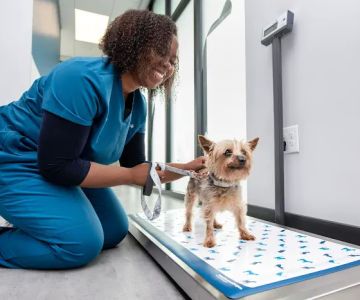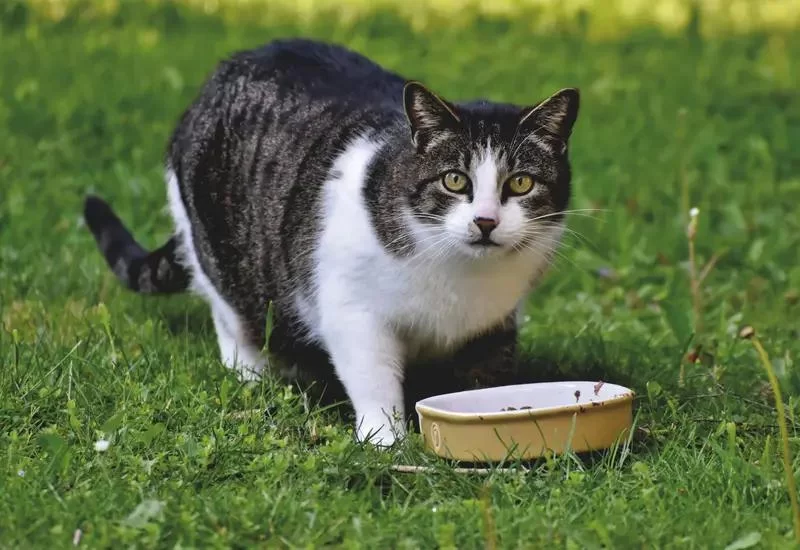Why Portion Control Matters for Your Pet
When I first got my dog, Max, I thought I was doing everything right when it came to feeding him. I would fill his bowl with what seemed like the right amount of food, but over time, I started to notice that he was gaining weight. At first, I didn’t think much of it, but soon his energy levels dropped, and he became sluggish. That’s when I realized that I hadn’t been paying enough attention to portion control, a key aspect of pet health that I had overlooked.
After doing some research and speaking with a vet, I learned that portion control is crucial for my pet’s overall well-being. Whether you have a dog, cat, or any other pet, controlling their food intake is essential for maintaining a healthy weight, preventing obesity, and ensuring they get the right nutrients. In this article, I’ll share what I learned about portion control, how it impacts your pet’s health, and the steps I took to help Max achieve a healthier lifestyle.

12350 US-301 #10, Riverview, FL 33579, USA
See DetailsStep 1: Understanding Your Pet’s Nutritional Needs
The first step in mastering portion control is understanding your pet’s specific nutritional requirements. Every pet is different, and their needs depend on various factors, including breed, age, size, activity level, and overall health. I realized that Max’s portion sizes were too large for his activity level, and I needed to adjust his meals accordingly.
1. Age and Size
Just like humans, pets have different nutritional needs at various stages of life. A puppy, for instance, requires more energy and protein than an adult dog because they are growing. Similarly, older dogs typically need fewer calories, as their metabolism slows down. Max is an adult dog, so I had to reduce the amount of food he was eating to match his level of activity. A large breed dog, like a Labrador, may require more food than a small breed, like a Chihuahua. Understanding your pet’s specific needs based on size and age is crucial for portion control.
2. Activity Level
Max’s activity level also played a major role in determining how much food he needed. I started paying attention to his daily exercise routine—whether he was going for long walks, running around the yard, or spending a lazy afternoon indoors. When he was more active, he required more calories to keep up with his energy expenditure. However, on days when he didn’t get as much exercise, I would reduce his food intake. It’s important to adjust the portions based on how active your pet is. Overfeeding on sedentary days can lead to unwanted weight gain.
Step 2: Measuring Food Accurately
One of the biggest mistakes I made was simply guessing how much food Max should be getting. I would pour food into his bowl and assume that it was the right amount. But when I started using a measuring cup and following the guidelines on the pet food packaging, I realized I was overfeeding him.
1. Follow Feeding Guidelines
Most commercial pet foods come with feeding guidelines based on your pet’s weight and age. I started paying closer attention to these recommendations, which helped me understand how much Max should be eating. The feeding guidelines can be a helpful starting point, but keep in mind that each pet is unique. You may need to adjust the portions based on your pet’s metabolism, activity level, and health status. Consulting with a veterinarian is also a great way to get personalized advice.
2. Use a Scale or Measuring Cups
To avoid over or underfeeding, I began using a kitchen scale to weigh Max’s food. I also invested in a set of measuring cups to ensure I was giving him the right portion size every time. It may seem like a small thing, but being precise with food measurements made a huge difference in managing Max’s weight. Measuring the food ensures consistency and helps prevent unintentional overeating.
Step 3: Adjusting Portion Sizes for Weight Management
If your pet is overweight, portion control becomes even more critical. I started noticing that Max had gained a few extra pounds, which can lead to serious health issues, such as diabetes, joint problems, and heart disease. When I discussed Max’s weight with the vet, we decided that reducing his food intake and making sure he got regular exercise would be key to getting him back to a healthy weight.
1. Gradual Reduction in Portions
When adjusting portions for weight loss, it’s important not to make drastic changes. A sudden reduction in food can leave your pet feeling hungry, which might lead to begging or even health issues. I gradually reduced Max’s food portions, cutting back by 10-20% each week until he reached a healthy weight. This gradual approach allowed Max’s body to adjust without feeling deprived. It also helped prevent him from feeling sluggish or lethargic due to a sudden drop in calorie intake.
2. Treats and Snacks
Max loves treats, but I realized that his snack intake was contributing to his weight gain. While treats are an excellent way to bond with your pet and reinforce good behavior, they should be included in your pet’s overall calorie count. I started offering smaller treats and reducing the number of times I gave him snacks. I also replaced some of his treats with healthier options, like carrot sticks or apple slices, which were lower in calories but just as satisfying.
Step 4: Monitoring and Adjusting as Needed
Once I made changes to Max’s diet, I kept a close eye on his weight and overall health. I weighed him every few weeks to track his progress. If Max started losing weight too quickly or seemed too hungry, I would slightly adjust his portions to ensure he was getting the right amount of food. The key is to continuously monitor your pet’s condition and make adjustments based on their progress.
1. Regular Vet Check-ups
Regular vet check-ups are essential for ensuring your pet’s weight is within a healthy range. I’ve found that having a professional assess Max’s health and weight regularly is crucial for preventing any issues. If you’re unsure about how to adjust portions or how much your pet should be eating, your vet can provide valuable insights and personalized recommendations.
2. Recognizing Signs of Overfeeding or Underfeeding
One of the things I learned about portion control is the importance of recognizing signs of overfeeding or underfeeding. If Max seemed constantly hungry, I knew I might not be feeding him enough. If he started to gain too much weight, I’d know that I was overfeeding him. Learning to read these signs and adjust accordingly was an essential part of helping Max maintain a healthy weight.
How Hidden Brook Veterinary Can Help with Portion Control
If you’re unsure about how to properly portion food for your pet, Hidden Brook Veterinary is here to help. Our team of professionals can guide you on the right food portions based on your pet’s size, breed, age, and health condition. We can also help you monitor your pet’s weight and offer advice on creating a balanced diet that promotes overall well-being. Don’t hesitate to reach out to us for more information on maintaining your pet’s health through proper portion control.











